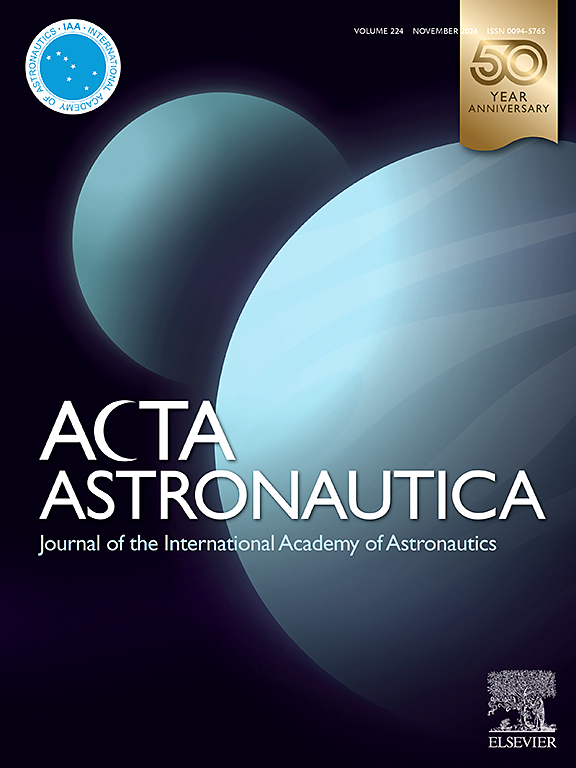Application of the finite element method to evaluate the effectiveness of spacecraft protective screens
IF 3.1
2区 物理与天体物理
Q1 ENGINEERING, AEROSPACE
引用次数: 0
Abstract
In this work, within the framework of the Lagrangian approach, the hypervelocity interaction (HVI) of an aluminum particle, representing space debris, with monolithic and spaced barriers made of aluminum alloy of equivalent thickness is numerically studied using the finite element method. The simulation is performed using the proprietary 3D software complex EFES, which ensures mass conservation under the fracture condition. The implemented fracture algorithm allows for the description of material fragmentation and the formation of new contact boundaries without distorting the computational mesh. A comparison with experimental data on crater depth under hypervelocity impact has been conducted. The protective properties of monolithic and spaced barriers were evaluated in the velocity range of 3–15 km/s.
求助全文
约1分钟内获得全文
求助全文
来源期刊

Acta Astronautica
工程技术-工程:宇航
CiteScore
7.20
自引率
22.90%
发文量
599
审稿时长
53 days
期刊介绍:
Acta Astronautica is sponsored by the International Academy of Astronautics. Content is based on original contributions in all fields of basic, engineering, life and social space sciences and of space technology related to:
The peaceful scientific exploration of space,
Its exploitation for human welfare and progress,
Conception, design, development and operation of space-borne and Earth-based systems,
In addition to regular issues, the journal publishes selected proceedings of the annual International Astronautical Congress (IAC), transactions of the IAA and special issues on topics of current interest, such as microgravity, space station technology, geostationary orbits, and space economics. Other subject areas include satellite technology, space transportation and communications, space energy, power and propulsion, astrodynamics, extraterrestrial intelligence and Earth observations.
 求助内容:
求助内容: 应助结果提醒方式:
应助结果提醒方式:


